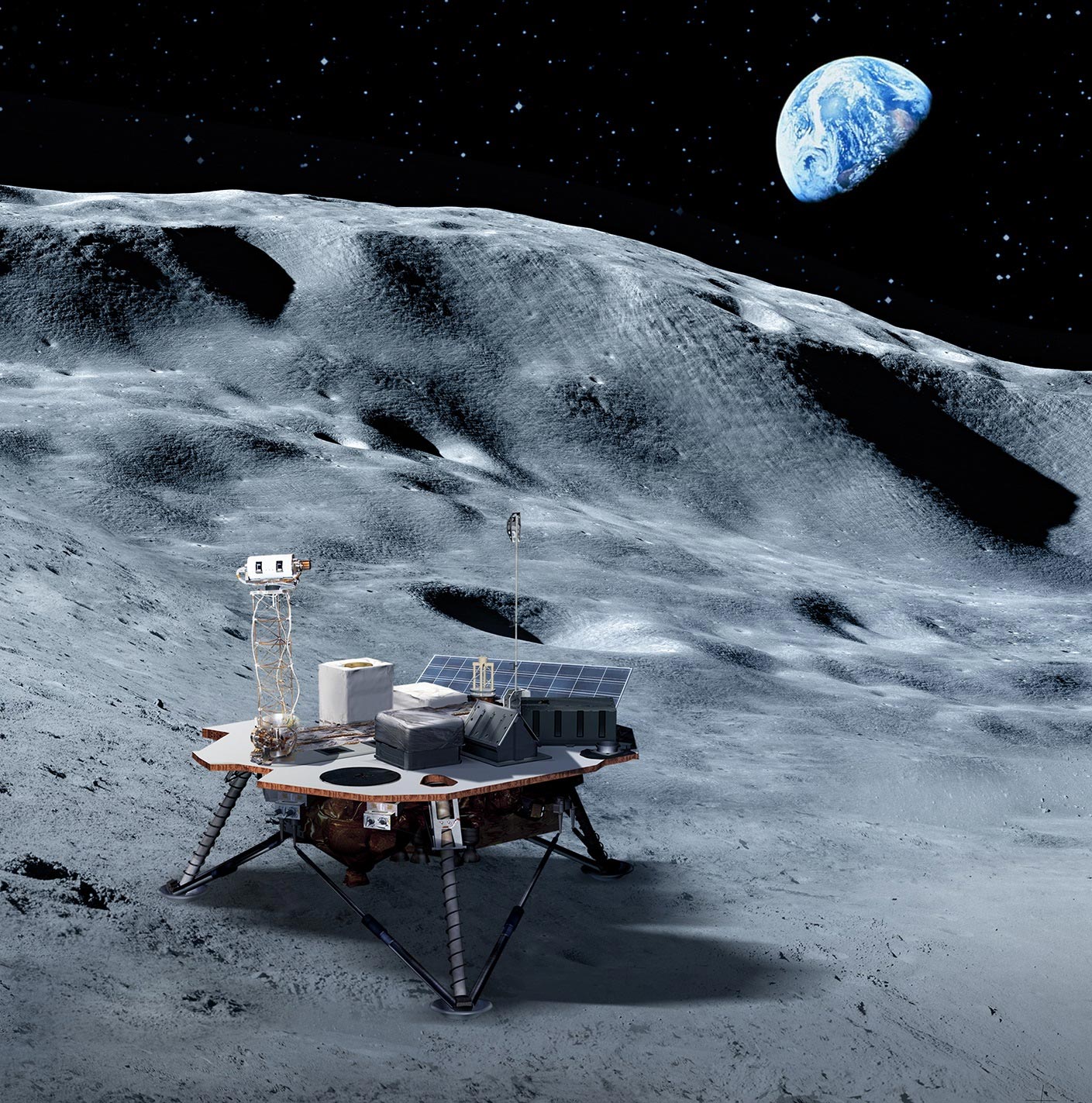

La NASA y el Departamento de Energía están colaborando para crear un instrumento llamado Lunar Surface Electromagnetics Experiment-Night (LuSEE-Night), que puede soportar el duro entorno del lado oculto de la Luna durante la noche. El instrumento hará mediciones por primera vez de las edades oscuras del universo. Crédito: NASA/GSFC/ASU
La NASA y el Departamento de Energía (DOE, por sus siglas en inglés) están trabajando juntos para desarrollar un instrumento científico que sobrevivirá al entorno duro e implacable de la superficie lunar durante la noche en el lado oculto de la Luna para intentar las primeras mediciones de su tipo de la Luna. Las edades oscuras del universo. El instrumento, llamado Lunar Surface Electromagnetics Experiment-Night (LuSEE-Night), es una colaboración entre el Laboratorio Nacional Brookhaven del Departamento de Energía, la Oficina de Ciencias del Departamento de Energía, el Laboratorio de Ciencias Espaciales de UC Berkeley y[{” attribute=””>NASA’s Science Mission Directorate.
LuSEE-Night is a pathfinder to understand the Moon’s radio environment and to potentially take a first look at a previously unobserved era in our cosmic history. This collaboration further strengthens the longstanding partnership between NASA and the DOE to enable space innovation and exploration.
The Dark Ages is an important epoch in cosmological studies as it can provide new insights into the formation and evolution of our Universe. The Dark Ages occurred between approximately 380 thousand – 400 million years after the origin of the universe, known as the Big Bang, and are a time before the first luminous stars and galaxies appeared. Since radio waves present the only signal we can measure from the Dark Ages, LuSEE provides an opportunity to learn how the first non-luminous matter evolved into the stars and galaxies that we see dominating the observable Universe today.

Commercial landers will carry NASA-provided science and technology payloads including LuSEE-Night to the lunar surface. Credit: NASA
Unfortunately, these important radio wave signals from the Dark Ages are impossible to measure from Earth’s surface due to our planet’s opaque ionosphere and the noise from Earth’s constant “pollution” of the inner solar system with radio waves. However, due to the Moon’s lack of an interfering ionosphere – and due to the far side of the Moon being constantly shielded from harmful radio emissions from Earth, as well as the Sun during the lunar night – the far side of the Moon offers a unique environment that allows for observations of sensitive radio astronomy signals that cannot be obtained anywhere else in the near-Earth space environment. LuSEE-Night, which will be delivered to the far side of the Moon on a future Commercial Lunar Payload Services (CLPS) flight, will utilize deployable antennas and radio receivers to potentially observe these sensitive radio waves from the Dark Ages for the first time. By physically being on the lunar surface and taking measurements at the right time, several external sources of radio interference will be removed, including radio noise from the Sun, Earth, Jupiter, and Saturn. ;
“LuSEE-Night is a fascinating experiment that will get us closer to observing something we’ve never been able to before – the Dark Ages signal,” said Asmeret Asefaw Berhe, DOE’s Director of the Office of Science. “With this collaboration, DOE and NASA are setting conditions for successful exploration of the Dark Ages cosmology in the decades to come.”

The Lunar Surface Electromagnetics Experiment, or LuSEE, will be built by the Space Science Laboratory to study the magnetic and electric fields on the moon’s surface and how they interact with fine dust particles. The scientific instruments will land on the daylight side of the moon, where sunlight knocks electrons out of atoms to electrostatically charge and levitate the dust. Credit: UC Berkeley image by Stuart Bale
However, a significant challenge will be for the instrument to survive the harsh, cold, and dark environment of the lunar night on the far side of the Moon long enough to collect and return data to Earth. Throughout the day and night cycle on the Moon, temperatures swing between around 250°F (120°C) during the day and -280°F (-173°C) at night. This temperature range presents a significant challenge to not only taking and transmitting the data, but also in keeping the instrument from freezing and ending the mission prematurely. Thus, technology to survive the lunar night is critical for not only robotic activities, but for creating a sustained human presence on the lunar surface.
“LuSEE-Night will operate during the cold temperatures of the 14-day lunar night, when no sunlight is available to generate power or heat,” said Joel Kearns, deputy associate administrator for exploration in NASA’s Science Mission Directorate. “In addition to the significant potential science return, demonstration of the LuSEE-Night lunar night survival technology is critical to performing long-term, high-priority science investigations from the lunar surface.”
If successful, LuSEE-Night will act as a pathfinder to help inform larger future instruments to further measure these otherwise undetectable radio frequencies, and help scientists better understand the earliest period of the Universe’s formation and evolution.
“This measurement is very challenging, radio emission from the galaxy is very bright and our Dark Ages signal is hiding behind it,” said LuSEE-Night PI Stuart D. Bale. Anže Slosar, the LuSEE-Night science collaboration spokesperson, added “Every time we have opened a new frequency window in cosmology, we have unlocked new discoveries about the history of the Universe and our place within it.”
LuSEE-Night is planned to be delivered to the Moon on a future CLPS flight. Through CLPS flights, NASA is buying a complete commercial robotic lunar delivery service and does not provide launch services, own the lander, or lead landing operations. Prof. Stuart D. Bale of University of California, Berkeley is the NASA Principal Investigator for LuSEE-Night with Anže Slosar and Sven Herrmann from Brookhaven National Laboratory as the DOE lead and project manager, respectively.

“Futuro ídolo adolescente. Explorador amigable. Alborotador. Especialista en música. Practicante ávido de las redes sociales. Solucionador de problemas”.





More Stories
Compensar el sueño los fines de semana puede reducir el riesgo de enfermedad cardíaca en una quinta parte: estudio | Cardiopatía
¿Cómo se hicieron los agujeros negros tan grandes y rápidos? La respuesta está en la oscuridad.
Una estudiante de la Universidad de Carolina del Norte se convertirá en la mujer más joven en cruzar las fronteras del espacio a bordo de Blue Origin